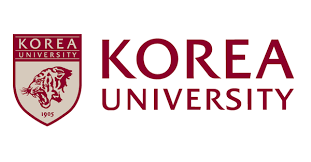Korea University: Opening a New Horizon for One-dimensional Nanostructure Controls
Professor Kim Young-keun’s group of the Department of Materials Science and Engineering at College of Engineering has become the first research team in the world that has demonstrated that the metal ions in 100 to 200 nm nanopores have different reaction pathways depending on the magnitude of the external electric field.
The research group found that when an electric field toward a cathode is applied (induced) to metal ions in an acidic atmosphere, the ions do not react immediately on the electrode surface but may be reduced in accordance with the current flowing along the surface of the nonconductor. It was theoretically and empirically verified that if the reducing reaction is well controlled, nanomaterials can be synthesized in a manner that enables increasing the complexity of nanostructures, from cylindrical nanowires, the simplest shape, to hollow nanotubes and even spring-like nanocoils. The results of this study were published online in Nano Today (IF: 20.722), a globally acclaimed journal in nanoscience and nanotechnology, on November 26.
Based on its special shape, a coil-like twisted structure can show electrical, magnetic and mechanical properties that differ from existing shapes, and thus is drawing much attention as a structure that can exceed the current technical limits in various applications. In fact, Professor Kim Young-keun’s group has already reported the control of cobalt-iron alloy material-based nanocoils, the analysis of their physical properties, and their application to the immunoregulation of regenerative cells such as stem cells and macrophages.
One method for preparing a one-dimensional nanostructure is to apply electroplating to an anodized aluminum oxide (AAO) template, a method that has been recently employed by many researchers because of its advantages with respect to economic feasibility, environment-friendliness and experimental convenience. However, in the case of the traditional template-based electroplating, a nanostructure must follow the architecture of the template, which has been a significant limitation in extending related research. Therefore, there has been much controversy about the mechanism by which a helical nanostructure is formed.
First, the research group examined the roles of the additives to the precursor solution. A vanadyl ion (VO2+), one of the additives, can charge with very strong positive charges the surface of an aluminum oxide surface, a weakly positive-charged nonconductor in an acidic solution. This enables the surface of the nonconductor to provide an additional pathway to the electrons supplied through an electrode, in addition to the electrode surface.
Second, the research group found that when an appropriate amount of ascorbic acid, a reducing agent, was added, the ascorbic acid preferentially reacted with vanadyl ions rather than the precursor metal ions. The reduction process partially screened the charges on the aluminum oxide surface. This screening appropriately hindered the reduction of the metal ions in the precursor solution, involving the growth of the primary particles.
In addition, the formation of a byproduct, vanadyl ascorbate, was found in the reaction process. Vanadyl ascorbate played the role of connecting the structures created by synthesized nanocrystalline primary particles with a helical modifier to assemble them into their final form as nanocoils. The strength of the connection could be adjusted by varying the strength of the external electric field. The research group successfully synthesized nanocoils from various metal ions, including cobalt, iron, nickel, copper and their alloys, by using the same method, showing that the method is applicable to various metals.
Professor Kim Young-keun, who led the research, explained the significance of the study, saying, “Electroplating, which employs an aqueous solution-based precursor solution, is highly economic and environment friendly and has high synthesis convenience, but its application has been limited to the preparation of only simple nanostructures due to the methodological limitations. Looking outside the box, our results provide a new crystallization mechanism that can be used to control both the microstructure and shape of nanostructures. The demand for complicated nanostructures, such as nanocoils, is recently increasing in various areas. Since our method allows for carrying out the mass production of complicated nanostructures in a very easy manner by simply adjusting the synthesis conditions, our method may open a new horizon for various interdisciplinary studies.”

